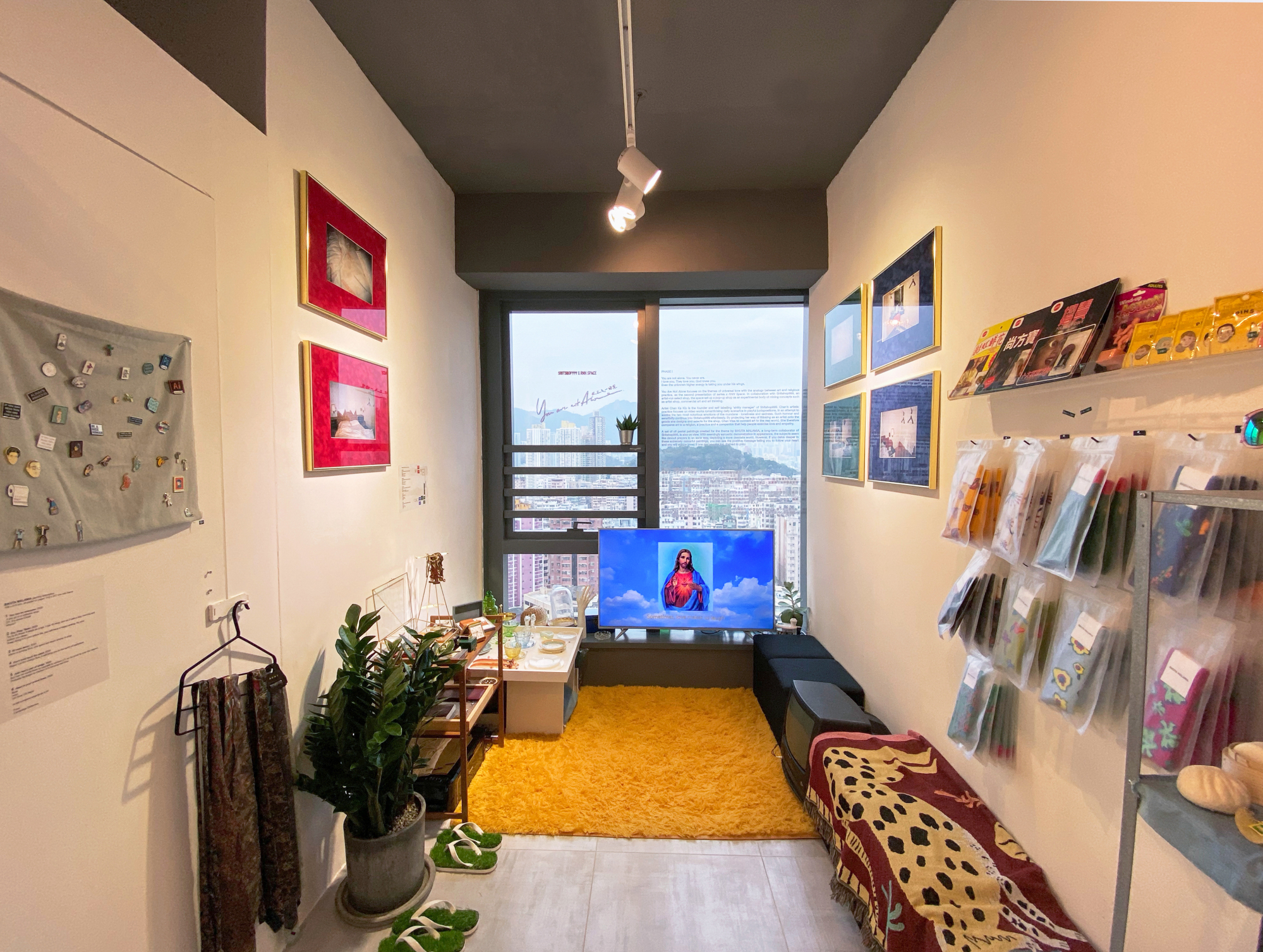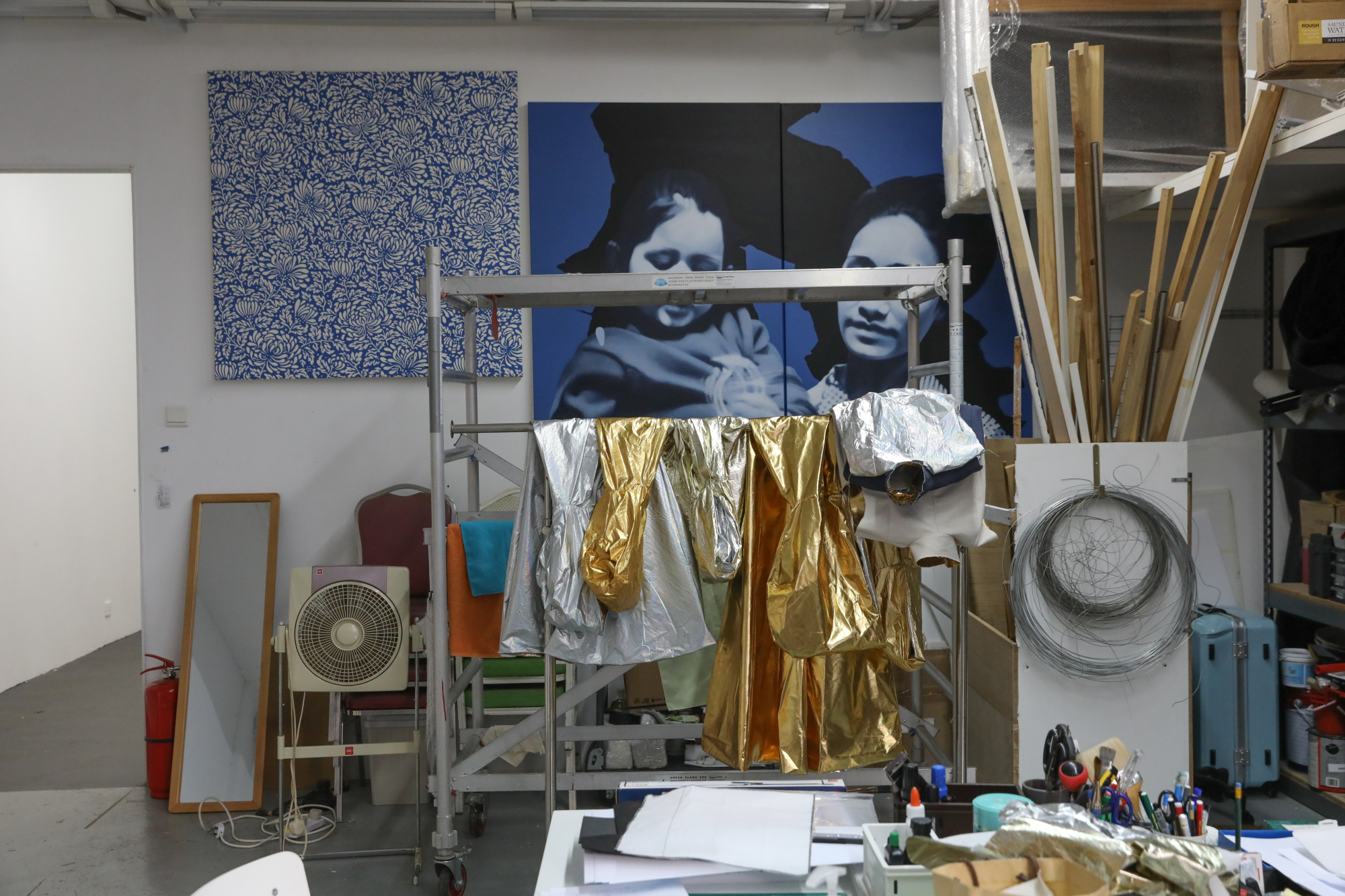
Independent art finds room to flourish in Hong Kong as young artists and creatives grab retail spaces left empty by the pandemic
- Artists and curators are taking the opportunity to experiment on their own terms as more affordable spaces open up, freeing them of creative confines
- Hong Kong’s art scene has long been criticised for its focus on commercial galleries and lack of independent, artist-run spaces
Small independent art spaces and pop-up exhibitions have been sprouting up with more frequency all over Hong Kong in the past year. The reason? Many younger artists and creatives are moving into retail spaces left empty by the Covid-19 pandemic.
They’re taking the opportunity to collaborate and experiment on their own terms, free of the creative confines of commercial galleries, international art fairs and cultural institutions that have long defined the local art scene.
Alberto Gerosa, director of Thy Lab, an experimental art space in Sham Shui Po, notes that the textile industry, which was heavily affected by the pandemic, has left a vacancy of spaces in the area, contributing to the influx of new cafes and eateries.
“I haven’t seen any fall in rents in Sham Shui Po, but it really depends on the single landlord. Our landlord agreed to keep the rent stable, which was helpful,” he says.

One property agent in the area confirms that rents have fallen slightly, in part due to the increase in vacant spaces seen over the pandemic from businesses that couldn’t afford to sustain themselves.
This new trend provides possibilities for young local creatives. Eunice Tsang, curator of Present Projects – an experimental art space with a small retail section in Sham Shui Po founded by famed photographer Wing Shya, which opened in January – says the local scene previously lacked infrastructure and support for artists “to go crazy and do experimental shows”.
“You have to go through a lot to get funding, or be noticed by institutions and galleries. But there is this regenerative energy that exists here – we always find a way to work around things,” she says.
Sold from one man to another, 3 Chinese women whose arts shone
Nestled in a three-storey renovated tong lau (old-style walk-up building), the space is above trendy coffee shop Colour Brown x PHVLO Hatch, better known for its green spiral staircase than its coffee. Shya wanted to open the space to provide new cultural material for the public.
Present Project’s current exhibition, “Surviving Natality”, is a rare collaboration between artists Chan Ho-lok and Chan Bee featuring a series of the latter’s paintings that were inspired by the former’s writing. While not blatantly experimental, this sort of cross-disciplinary collaboration allows each artist to widen their horizons and embrace unfamiliar territory.
I do have good relationships with the galleries and institutions I’ve worked with, but sometimes you just want to do something without explanation, concerns and negotiations
Tsang had to convince Chan Bee to participate as she rarely exhibits her work. “There are a lot of artists and creatives who fall between the cracks,” Tsang says.
For an upcoming show, “Only a Joke Can Save Us”, co-curated with independent curator Tiffany Leung, Tsang will explore how artists use satire and humour in their works.
These kinds of exhibitions have become more common over the past six months as spaces become vacant and opportunities once linked to big events such as Art Basel Hong Kong are scarce. The pandemic has jolted artists, curators and other creative professionals to initiate new shows and projects locally. This has allowed them a certain amount of creative independence and freedom to produce the kind of work and exhibitions that they want to.
“There aren’t enough independent artist-run spaces here,” Tsang says. “We’re sometimes bored with certain shows that we see here, either in commercial galleries or publicly funded institutions. Sometimes I just want to see really gritty, DIY stuff.”

The city’s recent “gritty” and intimate exhibition A’fair, involving the four-day takeover of what used to be a Japanese restaurant by a group of artists in November 2020, proved to be a refreshing hit. Meanwhile, artist Trevor Yeung installed a series of his artworks in an old studio apartment in Prince Edward in December 2020 for his exhibition “There’s Something Missing”.
An established local artist, Yeung wanted the opportunity to express himself outside gallery and museum walls.
“I do have good relationships with the galleries and institutions I’ve worked with, but sometimes you just want to do something without explanation, concerns and negotiations,” he says.

Yeung chanced upon the Prince Edward rental and decided to create a more intimate viewing experience with a domestic room. “I needed a strong sense of intimacy for building up the relationship between the artworks and audiences, and the trust between the audiences and the artist,” he says.
Also intimate in size, and appealing in concept, the 100-square-foot (9.2-square-metre) RnH Space in Tai Kok Tsui popped up on the local art scene in October 2020. It was founded by Yang Jiang, 29, who wanted to open her own art space with a distinct curatorial vision after previously working for a commercial gallery and prominent art institution.
“I wanted to talk about love,” she says. “It seems cheesy, but I want to talk about emotions, because I never felt like I had a safe space to be vulnerable, especially as a female. So I wanted to have this platform for artists to freely express themselves.”

The inauguration of RnH was an exhibition by artist Wu Jiaru, whose silver, shiny and reflective spray-painted collage sculptures often include beauty products, high-heeled shoes, and other girlie, domestic items, which Jiang refers to as “hyper-feminine”.
While RnH is small, financial sustainability remains a challenge. Jiang, who was able to get a cheap rent of under HK$10,000 (US$1,300) a month, in large part due to Covid-19, is paying to keep the space going and she says she will continue to for as long as she can.

The longevity of art space is constantly challenged in Hong Kong, with many spaces, such as Bedroom, in Tai Kok Tsui, and Things that Can Happen, in Sham Shui Po, closing down after operating for a couple of years, in large part due to escalating rents.
Adaptation, reinvention and consistent funding have been crucial for long-standing independent spaces such as Videotage (founded in 1986) and 1A Space (founded in 1998), both of which are located in Ma Tau Kok’s Cattle Depot Artist Village (1A Space moved there from its original spot on North Point’s Oil Street). Para Site, meanwhile, now considered an institution, began as an artist-run space in the 1990s in Sheung Wan, but is now located Quarry Bay.
It’s really the experimental we want to support; it’s hard to find a space where you can try these things out
Independent art spaces, though few in number, have played an important role in contributing to a more rigorous art scene.
When writer and artist Linda Chiu-Han Lai, associate professor in intermedia arts and critical theory at the City University of Hong Kong’s School of Creative Media (SCM), launched Floating Projects in 2015, she was able to rent the art space using her own money thanks to her stable teaching job.
In 2018 she moved Floating Projects, initially located in Wong Chuk Hang, to the Jockey Club Creative Arts Centre (JCCAC), which offered her a better rental deal (which is currently around HK$16,000 a month).

Joseph Leung, 25, a former student of Lai’s, had similar ideas when he opened Negative Space in the Foo Tak Building in Wan Chai in early 2019, with co-founders and fellow artists Chan Ting, Sing Lau, Owen Wong and Andy Li.
“We wanted something that’s more substantial and sustainable, that impacts an artist’s career,” Leung says.

With only low rent to pay – under HK$10,000 a month – they created a space where artists could show their work to other artists and build a solid community. “It’s important to have a space where you can experiment and be unafraid to critically engage with the work and the artist,” Leung says.
Isabella Ng, an artist and one of the co-founders of Hidden Space, stresses the importance of engagement and art criticism. “Critical feedback is an important part of an artist’s practice,” she says. “Maybe here [in Hong Kong] it takes on a different form, but there doesn’t seem to be enough conversation among artists.”


Set up in 2017 and located in Kwai Hing, Hidden Space – run by Ng, Kay Mei-ling Beadman and Katie Ho – has been gaining more exposure partially because of a strong social media presence.
“It’s really the experimental we want to support; it’s hard to find a space where you can try these things out,” Ho says.
Beadman says they want to operate on their own terms and not be beholden to anyone or any entity.
“We want to be a space where generosity and support are important.”

